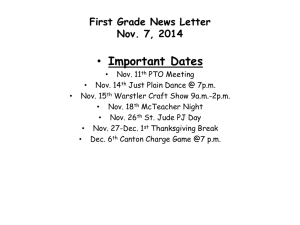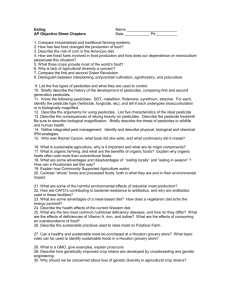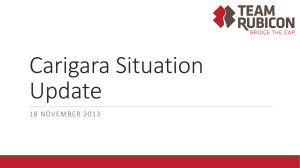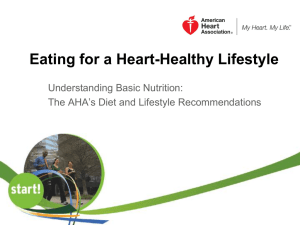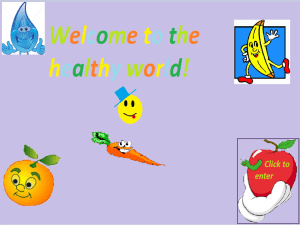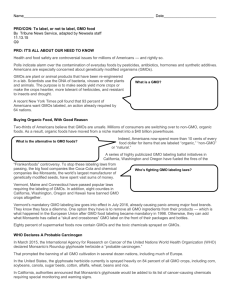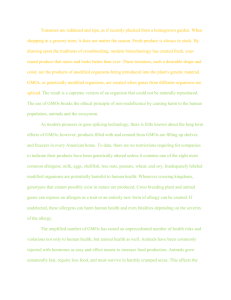Objective Sheet: Eating –
advertisement
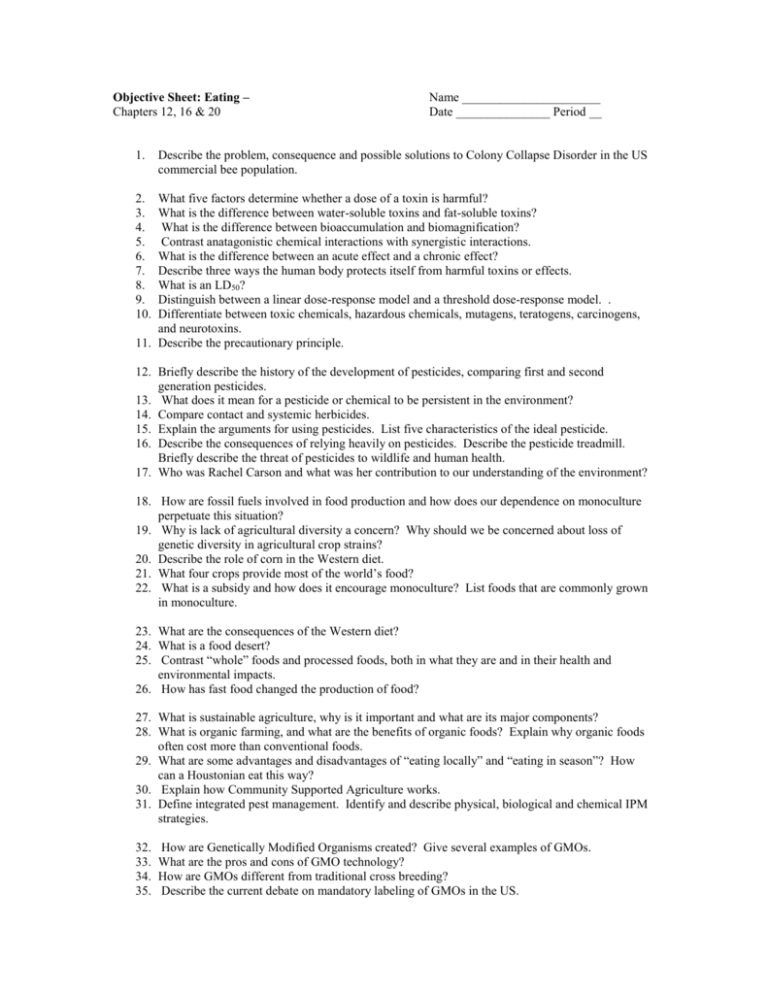
Objective Sheet: Eating – Chapters 12, 16 & 20 1. Name ______________________ Date _______________ Period __ Describe the problem, consequence and possible solutions to Colony Collapse Disorder in the US commercial bee population. 2. 3. 4. 5. 6. 7. 8. 9. 10. What five factors determine whether a dose of a toxin is harmful? What is the difference between water-soluble toxins and fat-soluble toxins? What is the difference between bioaccumulation and biomagnification? Contrast anatagonistic chemical interactions with synergistic interactions. What is the difference between an acute effect and a chronic effect? Describe three ways the human body protects itself from harmful toxins or effects. What is an LD50? Distinguish between a linear dose-response model and a threshold dose-response model. . Differentiate between toxic chemicals, hazardous chemicals, mutagens, teratogens, carcinogens, and neurotoxins. 11. Describe the precautionary principle. 12. Briefly describe the history of the development of pesticides, comparing first and second generation pesticides. 13. What does it mean for a pesticide or chemical to be persistent in the environment? 14. Compare contact and systemic herbicides. 15. Explain the arguments for using pesticides. List five characteristics of the ideal pesticide. 16. Describe the consequences of relying heavily on pesticides. Describe the pesticide treadmill. Briefly describe the threat of pesticides to wildlife and human health. 17. Who was Rachel Carson and what was her contribution to our understanding of the environment? 18. How are fossil fuels involved in food production and how does our dependence on monoculture perpetuate this situation? 19. Why is lack of agricultural diversity a concern? Why should we be concerned about loss of genetic diversity in agricultural crop strains? 20. Describe the role of corn in the Western diet. 21. What four crops provide most of the world’s food? 22. What is a subsidy and how does it encourage monoculture? List foods that are commonly grown in monoculture. 23. What are the consequences of the Western diet? 24. What is a food desert? 25. Contrast “whole” foods and processed foods, both in what they are and in their health and environmental impacts. 26. How has fast food changed the production of food? 27. What is sustainable agriculture, why is it important and what are its major components? 28. What is organic farming, and what are the benefits of organic foods? Explain why organic foods often cost more than conventional foods. 29. What are some advantages and disadvantages of “eating locally” and “eating in season”? How can a Houstonian eat this way? 30. Explain how Community Supported Agriculture works. 31. Define integrated pest management. Identify and describe physical, biological and chemical IPM strategies. 32. 33. 34. 35. How are Genetically Modified Organisms created? Give several examples of GMOs. What are the pros and cons of GMO technology? How are GMOs different from traditional cross breeding? Describe the current debate on mandatory labeling of GMOs in the US. 36. Compare the first and second Green Revolutions. 37. What are some of the harmful environmental effects of industrial meat production? 38. How are CAFO’s contributing to bacterial resistance to antibiotics, and why are antibiotics used in these facilities? 39. What are some advantages of a meat-based diet? 40. How does a vegetarian diet change the total amount of calories available for human consumption? 41. Describe the sustainable practices used to raise meat on Polyface Farm. 42. How can Houstonians find sustainably-raised animal products? 43. Describe the tradeoffs of relying on fish farms for a protein source. 44. What do the letters in the conceptual formula I=PAT stand for? Use the formula to describe the typical American diet compared to diets in other nations. 45. What are some simple “food rules” for finding more sustainable food in a typical grocery store? Monday Nov 10 Tuesday Nov 11 Wednesday Nov 12/ Thursday Nov 13 Friday Nov 14 Video discussion: Bees and Botany of Desire – big issues in food production Notes: Pesticides, Monocultures and Fossil Fuels Quiz – Obj #1-22 Notes: Sustainable Agriculture HW – Study objectives #1-22 for quiz Notes: Consequences of the Western Diet Go over Population Test HW – Read Sec 161 to 16-3 in text (pgs 397 – 404)Answer objectives #2-11; Assign GMO Discussion HW – Begin preparation for GMO discussion Monday Nov 17 Tuesday Nov 18 Wednesday Nov 19/Thursday Nov 20 GMO class discussion: Should GMOs be labeled in the US? GMO Free Response due Quiz – Obj #23-31 Notes: Urban Agriculture and sustainability Notes: Meat Production HW – Complete Free Response question on GMOs HW – study for Quiz Obj #23-31 Monday Nov 24 Tuesday Nov 25 Review Day TEST – Food and Eating HW – Study for Multiple Choice test Monday Dec 1 Eating Interview Due – MAJOR GRADE Assign Farmer’s Market Challenge; picture due to HUB by Dec 12th HW – complete preparation for GMO discussion Friday Nov 21 Notes: Food Rules and Sustainable Agriculture Assign Eating Interview due Dec 1 HW – Schedule interview time with family member Thanksgiving break! I am thankful for the opportunity to teach and learn with you! HW – Complete Eating Interview Start Air Pollution unit/ Farmer’s Market Challenge Due Dec 12th
